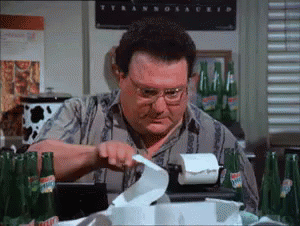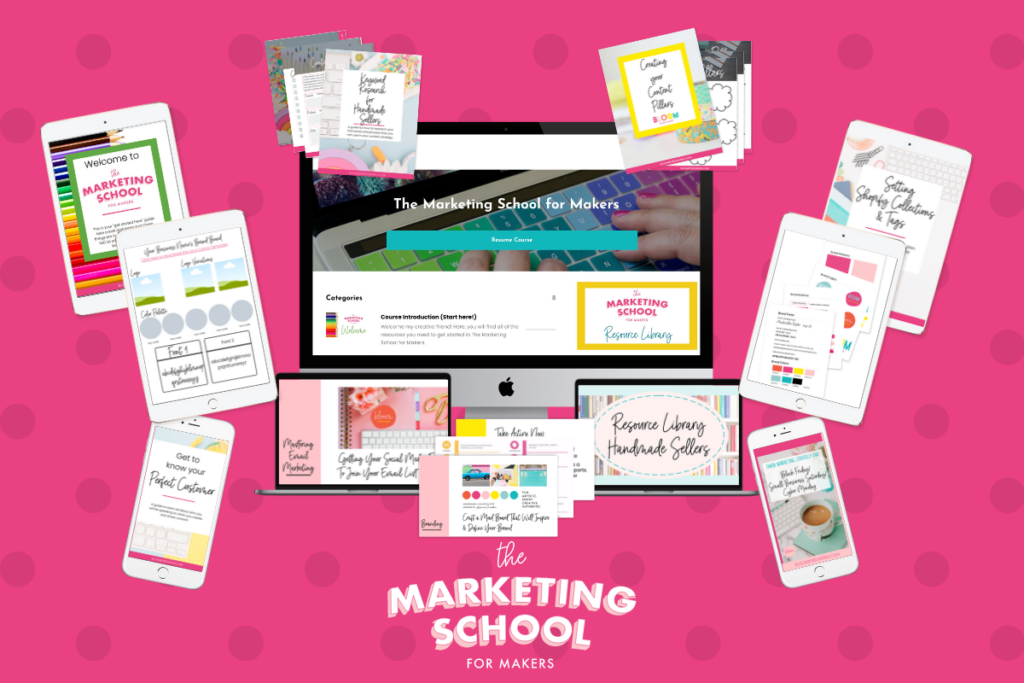Your go-to guide to mastering your in-person market experience
Freebie alert: Market Must-Haves for Makers
Blog Categories
An exclusive online membership for makers and creative business owners ready ditch the overwhelm and hustle for consistent sales and flexible schedules.
The Marketing School for Makers
Membership
Hi! I’m Lucy.
Chardonnay and vintage finds lover, founder of the handmade jewelry brand bel monili *and* your new guide to making your handmade business WORK online.
Hey, I'm Lucy
Tax Help for Craft Business Owners
Filed under:
Tax season will be here before you know it, and if you’re a craft business owner, there are certain items you need to track and record for tax purposes. Today’s post has some tax help to make your business owner life a little easier.

Tax time is not just in April! As a business owner, it’s something you will always need to think about (unfortunately). Not only do you need to think about sales tax, but you will also need to submit your income tax to the IRS.
While this may seem daunting, it doesn’t have to be. With the right preparation, you can easily navigate the work associated with taxes.
Read on for some helpful advice about what kind of information craft business owners should be tracking for tax time!
A special disclaimer: I am in no way a tax expert! I advise all business owners to find a CPA that you trust. They can answer any questions you may have, and will advise you on how to best track your finances.
Disclosure: some of the links below are affiliate links, meaning, at no additional cost to you, I will earn a commission if you click through and make a purchase.
Tax Help: Deductions
The IRS allows craft business owners to take deductions related to their businesses. Deductions lower your overall taxes owed, so it’s really important to keep track of them!
These deductions can include expenses such as:
- supplies
- overhead costs
- advertising and marketing costs
- cost for materials used to make sold items
- home office expenses
- wages for hired help
Many states allow additional deductions; make sure to research what applies in your state.
It’s important to keep track of all expenses throughout the year so you can claim them as deductions at tax time.
A big tax help for me was keeping a spreadsheet of all my expenses when I first started my jewelry business.
Once a week I would enter my expenses into each category. I also kept track of what I was spending on materials, and came up with a “costs of goods” amount for each item I made. Once that item sold, I added that cost of goods to my expenses for the year.
Paper & Spark is a brilliant company that creates custom spreadsheets for business owners just like us! They even have ones that are specific for Etsy Sellers and Shopify shops, among others. I think they are perfect for helping you organize your business.
You can check out more about what Paper & Spark offers here:
Now that my business is bigger, I use Quickbooks to keep track of everything.
Whatever way you choose, make sure you’re using something to track as you go. Otherwise you’ll be sitting in front of your computer on April 1st, crying because you have to go back and track all your finances!
Organizing Your Information
Create a file folder (either paper or digital) to hold all of your receipts for the year. It’s important to keep back up for all deductions. Make sure you have a folder dedicated to the year, and hold on to it even after you file your taxes.
If you’re doing this digitally, you can scan your paper receipts. You can also take a photo and then add them to your digital folder.

Bonus: Tracking Cost of Goods
You’ll need to track your cost of goods. Cost of Goods (COGS) is how much you pay for the materials you use to make your products. You can only deduct cost of goods for SOLD items. Using software like Quickbooks can make the process a lot easier.
If you buy your materials in bulk, you can calculate an estimate of how many products you can make with the bulk amount.

For example, let’s say you paint wooden signs, and buy your paint in a pint or ½ gallon. You’ll need to figure out how much your wood costs, as well as how much paint you use on each sign. Also include any hardware you include, packaging, etc.
Then, create a cost of goods for each item you make. It could look something like this:
Wood:
You get 10 signs out of one piece of wood. The full piece costs $100, so each sign is $10.
Paint:
You use 3 different colors of paint on each sign. You can get about 50 signs out of each pint, each pint costs you $20.00. So it costs about $0.40 per color for each sign or $1.20 for paint for each sign if you use three colors.
Packing materials:
You get free boxes from USPS and you use newspapers to wrap your signs, so no cost of good for packing materials.
Total cost of goods for wood signs:
$10 + $1.20 = $11.20
Again, you can only add this cost to your deductions when you sell a piece. You cannot deduct ALL the materials you purchase, just the portion you use for each product sold.
A spreadsheet with all these costs is a great way to keep track.
Tax Help: Income Tracking
Craft business owners must also track their income accurately. This includes keeping detailed records of sales made through different sales channels (e.g., Etsy, your own shop, etc).
It’s also important to record any payments received from customers throughout the year so that these can be reported accurately on your tax return.
If you use accounting software like Quickbooks or Wave, this process will be much easier as the software takes care of most of the calculations for you automatically.
The marketplaces like Etsy are also required to report your sales to the IRS if you make over a certain amount (it varies on state). You’ll receive a copy of this report, called a 1099-K, by January 31st so you can include it with your tax paperwork.

It’s important to talk to your tax expert about your 1099-K so that you understand what’s being reported to the IRS.
Get Professional Help
I’ll admit that taxes can be scary and overwhelming. It might be a good idea for you to enlist an expert to help make sure you’re doing everything correctly.
My good friend and fellow artist Jeanne Cherry is also an accountant and financial coach for creatives! She has started a service for handmade business owners to help with taxes and other bookkeeping tasks.
At Junxbooks, Jeanne is available to help with bookkeeping, tax compliance and profit strategizing. And since she’s also a maker, she knows exactly what you need.
Tax Help for Craft Business Owners
Tax time can feel overwhelming but it doesn’t have to be! As long as you keep accurate records of your expenses and income throughout the year, filing taxes will be a breeze come April 15th.
Be sure to utilize deduction opportunities when available and research exemptions or credits that could reduce your taxable income even further. Being prepared will make the whole process smoother in the long run – good luck!

The Marketing School for Makers
Make 2024 the year you master your marketing and create a business that ROCKS!
The summer class of the Marketing School for Makers is now open for enrollment.
But the doors close on July 3, 2024 so if you’ve been waiting to take your crafts from hobby to money-making biz, now’s the time!
Get all the details about my course and how it can change your business for the better at https://bloombybelmonili.com/msfm
Leave a Reply Cancel reply
You are in the right place, my creative friend!
After running bel monili (my handmade jewelry business) for 10 years, I launched Bloom in 2019 to create a community where handmade business owners could learn, grow, and support each other in this wild venture of small business ownership. Welcome to Bloom!
Join The MArketing School for Makers
follow
pin it
'Gram
watch
@bloombybelmonili
Great article but please clarify……..
In 2019 I buy $20.00 worth of beads at $1.00 a bead. I can’t take a deduction until I sell an item using those beads.
Example in 2020 I make a necklace and using 10 of those beads, I can now take a $10 deduction when I file my 2020 taxes. Then if I make a necklace in 2021 and use the other 10 beads, I take another
$10 deduction on my 2021 taxes. Correct?
I started my craft business in 2022 but I did not make any money. I made under $50 in 2023. What tax forms do I fill out?
Hi! This question is best answered by an accountant: the forms you need depend on the legal structure of your business. You need to file whether you made a profit or not 🙂
I am 71 years old and ended my small craft business in October 2023. I’ve been paying self employment taxes up until now. What do I need to do differently when filing for 2024. I canceled my Ohio vendors license immediately after my last show in 2023.
Thank you!
Hi! I would recommend contacting your accountant when it comes to specific tax filingn questions, as it differs from business to business and state to state. If you don’t have someone you work with, I highly recommend consulting with Jeanne from junxbooks: she is a financial coach for makers with over 40+ years of experience in bookkeeping, accounting, and handmade business (the trifecta!). You can visit her site here: https://junxbooks.com/ and book a free consultation.